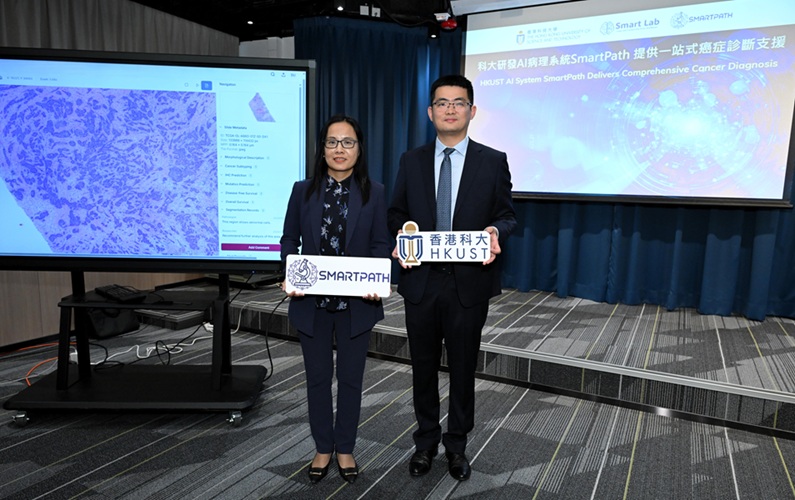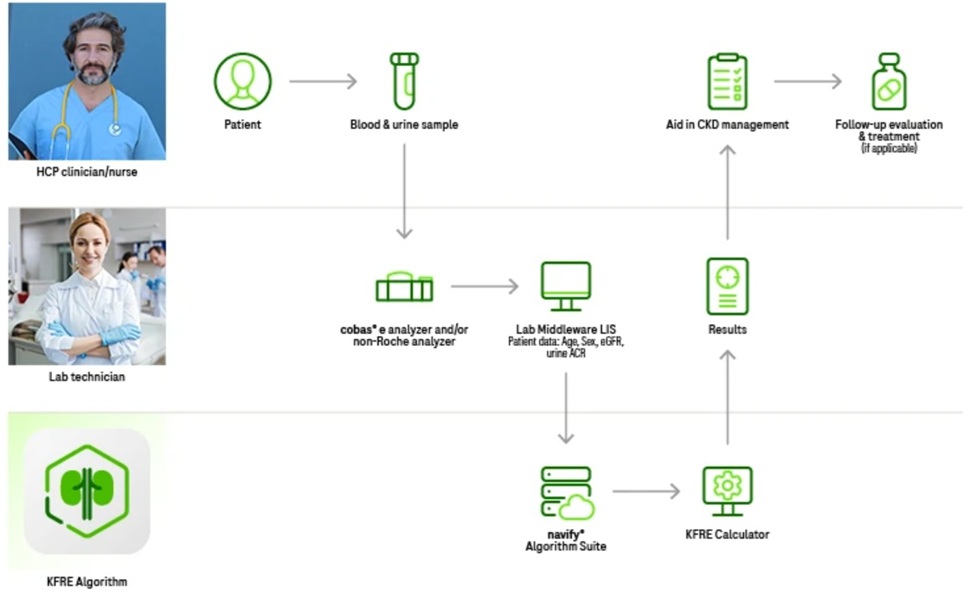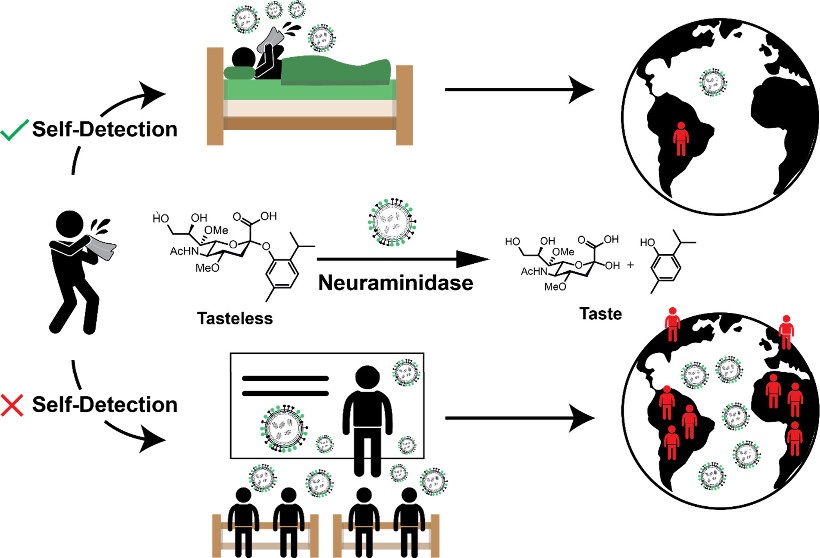T-cells Activated More Effectively by Ellipsoidal Artificial Antigen-Presenting Cells
|
By LabMedica International staff writers Posted on 21 Oct 2013 |

Image: T-cells (red) are activated more robustly when they interact with artificial antigen-presenting cells (green) that are elongated (right) versus round (left) (Photo courtesy of Dr. Karlo Perica, Johns Hopkins University).
Artificial antigen-presenting cells (aAPCs) shaped like American footballs were able to activate immune system T-cells to attack and destroy cancer cells much more effectively than spherical aAPCs.
When circulating T-cells interact with APCs, they become conditioned to recognize foreign proteins, so that if the T-cells encounter those proteins again, they are able to divide rapidly to create a multitude of defensive cells that attack and destroy the cells bearing those antigens.
While both forms of aAPCs are able to express suitable levels of surface antigens, ellipsoidal particles were found to contact an appreciably greater amount of the T-cell membrane surface than did spherical particles.
Investigators at Johns Hopkins University (Baltimore, MD, USA) reported in the October 5, 2013, online edition of the journal Biomaterials that ellipsoidal biomimetic aAPCs significantly enhanced in vitro and in vivo activity above that of spherical aAPCs with similar volume and antigen content. Confocal imaging studies indicated that CD8+ T-cells preferentially migrated to and were activated by interaction with the long axis of the aAPC. Importantly, enhanced activity of ellipsoidal aAPCs was seen in a mouse melanoma model, with the football shaped particles improving survival of test mice compared to spherical aAPCs.
"The shape of the particles really seems to matter because the stretched, ellipsoidal particles we made performed much better than spherical ones in activating the immune system and reducing the animals' tumors," said senior author Dr. Jordan Green, assistant professor of biomedical engineering at Johns Hopkins University. "When immune cells in the body come in contact, they are not doing so like two billiard balls that just touch ever so slightly. Contact between two cells involves a significant overlapping surface area. We thought that if we could flatten the particles, they might mimic this interaction better than spheres and activate the T-cells more effectively. This adds an entirely new dimension to studying cellular interactions and developing new artificial APCs. Now that we know that shape matters, scientists and engineers can add this parameter to their studies."
Related Links:
Johns Hopkins University
When circulating T-cells interact with APCs, they become conditioned to recognize foreign proteins, so that if the T-cells encounter those proteins again, they are able to divide rapidly to create a multitude of defensive cells that attack and destroy the cells bearing those antigens.
While both forms of aAPCs are able to express suitable levels of surface antigens, ellipsoidal particles were found to contact an appreciably greater amount of the T-cell membrane surface than did spherical particles.
Investigators at Johns Hopkins University (Baltimore, MD, USA) reported in the October 5, 2013, online edition of the journal Biomaterials that ellipsoidal biomimetic aAPCs significantly enhanced in vitro and in vivo activity above that of spherical aAPCs with similar volume and antigen content. Confocal imaging studies indicated that CD8+ T-cells preferentially migrated to and were activated by interaction with the long axis of the aAPC. Importantly, enhanced activity of ellipsoidal aAPCs was seen in a mouse melanoma model, with the football shaped particles improving survival of test mice compared to spherical aAPCs.
"The shape of the particles really seems to matter because the stretched, ellipsoidal particles we made performed much better than spherical ones in activating the immune system and reducing the animals' tumors," said senior author Dr. Jordan Green, assistant professor of biomedical engineering at Johns Hopkins University. "When immune cells in the body come in contact, they are not doing so like two billiard balls that just touch ever so slightly. Contact between two cells involves a significant overlapping surface area. We thought that if we could flatten the particles, they might mimic this interaction better than spheres and activate the T-cells more effectively. This adds an entirely new dimension to studying cellular interactions and developing new artificial APCs. Now that we know that shape matters, scientists and engineers can add this parameter to their studies."
Related Links:
Johns Hopkins University
Latest BioResearch News
- Genome Analysis Predicts Likelihood of Neurodisability in Oxygen-Deprived Newborns
- Gene Panel Predicts Disease Progession for Patients with B-cell Lymphoma
- New Method Simplifies Preparation of Tumor Genomic DNA Libraries
- New Tool Developed for Diagnosis of Chronic HBV Infection
- Panel of Genetic Loci Accurately Predicts Risk of Developing Gout
- Disrupted TGFB Signaling Linked to Increased Cancer-Related Bacteria
- Gene Fusion Protein Proposed as Prostate Cancer Biomarker
- NIV Test to Diagnose and Monitor Vascular Complications in Diabetes
- Semen Exosome MicroRNA Proves Biomarker for Prostate Cancer
- Genetic Loci Link Plasma Lipid Levels to CVD Risk
- Newly Identified Gene Network Aids in Early Diagnosis of Autism Spectrum Disorder
- Link Confirmed between Living in Poverty and Developing Diseases
- Genomic Study Identifies Kidney Disease Loci in Type I Diabetes Patients
- Liquid Biopsy More Effective for Analyzing Tumor Drug Resistance Mutations
- New Liquid Biopsy Assay Reveals Host-Pathogen Interactions
- Method Developed for Enriching Trophoblast Population in Samples
Channels
Clinical Chemistry
view channel
VOCs Show Promise for Early Multi-Cancer Detection
Early cancer detection is critical to improving survival rates, but most current screening methods focus on individual cancer types and often involve invasive procedures. This makes it difficult to identify... Read more
Portable Raman Spectroscopy Offers Cost-Effective Kidney Disease Diagnosis at POC
Kidney disease is typically diagnosed through blood or urine tests, often when patients present with symptoms such as blood in urine, shortness of breath, or weight loss. While these tests are common,... Read moreMolecular Diagnostics
view channel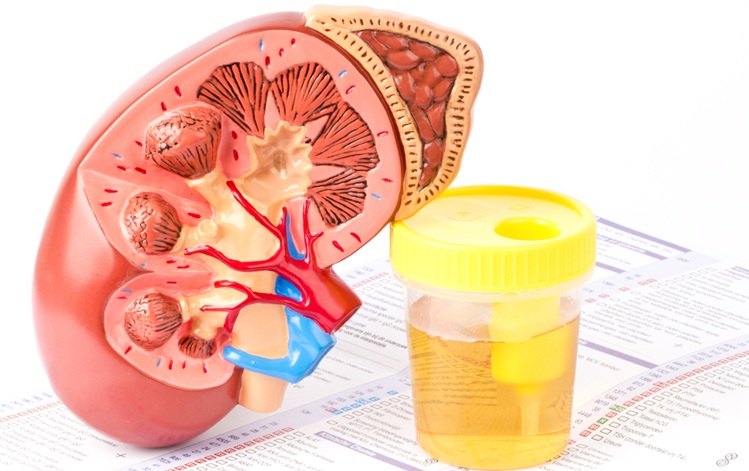
Urine Test Could Replace Painful Kidney Biopsies for Lupus Patients
Lupus is an autoimmune disorder that causes the immune system to attack the body’s own tissues and organs. Among the five million people living with lupus globally, nearly half develop lupus nephritis,... Read more
Blood Test Guides Post-Surgical Immunotherapy for Muscle-Invasive Bladder Cancer
After surgery for muscle-invasive bladder cancer, many patients face uncertainty about whether residual cancer cells remain in their bodies. Now, a new international phase 3 study has demonstrated that... Read more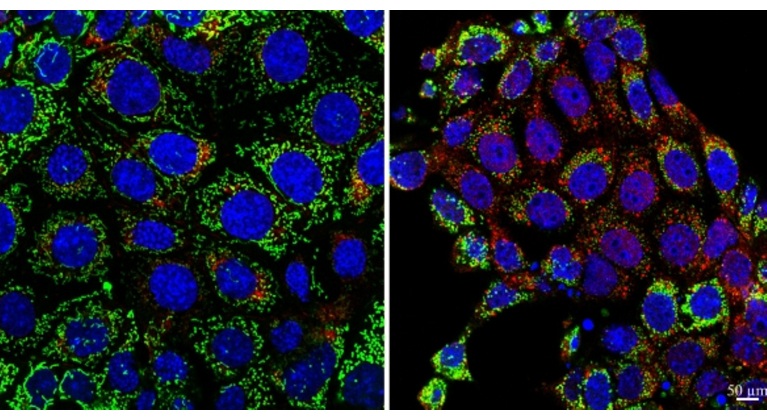
Mitochondrial DNA Mutations from Kidney Stressors Could Predict Future Organ Decline
Kidney-related diseases are alarmingly common: chronic kidney disease (CKD) affects more than one in seven U.S. adults, while about 20% of hospitalized adults are diagnosed with acute kidney injury (AKI).... Read moreHematology
view channel
Viscoelastic Testing Could Improve Treatment of Maternal Hemorrhage
Postpartum hemorrhage, severe bleeding after childbirth, remains one of the leading causes of maternal mortality worldwide, yet many of these deaths are preventable. Standard care can be hindered by delays... Read more
Pioneering Model Measures Radiation Exposure in Blood for Precise Cancer Treatments
Scientists have long focused on protecting organs near tumors during radiotherapy, but blood — a vital, circulating tissue — has largely been excluded from dose calculations. Each blood cell passing through... Read more
Platelets Could Improve Early and Minimally Invasive Detection of Cancer
Platelets are widely recognized for their role in blood clotting and scab formation, but they also play a crucial role in immune defense by detecting pathogens and recruiting immune cells.... Read more
Portable and Disposable Device Obtains Platelet-Rich Plasma Without Complex Equipment
Platelet-rich plasma (PRP) plays a crucial role in regenerative medicine due to its ability to accelerate healing and repair tissue. However, obtaining PRP traditionally requires expensive centrifugation... Read moreImmunology
view channel
Signature Genes Predict T-Cell Expansion in Cancer Immunotherapy
Modern cancer immunotherapies rely on the ability of CD8⁺ T cells to rapidly multiply within tumors, generating the immune force needed to eliminate cancer cells. However, the biological triggers behind... Read more
Molecular Microscope Diagnostic System Assesses Lung Transplant Rejection
Lung transplant recipients face a significant risk of rejection and often require routine biopsies to monitor graft health, yet assessing the same biopsy sample can be highly inconsistent among pathologists.... Read moreMicrobiology
view channel
Fast Noninvasive Bedside Test Uses Sugar Fingerprint to Detect Fungal Infections
Candida bloodstream infections are a growing global health threat, causing an estimated 6 million cases and 3.8 million deaths annually. Hospitals are particularly vulnerable, as weakened patients after... Read more
Rapid Sepsis Diagnostic Device to Enable Personalized Critical Care for ICU Patients
Sepsis is a life-threatening condition that occurs when the body’s response to infection spirals out of control, damaging organs and leading to critical illness. Patients often arrive at intensive care... Read morePathology
view channel
Tears Offer Noninvasive Alternative for Diagnosing Neurodegenerative Diseases
Diagnosing and monitoring eye and neurodegenerative diseases often requires invasive procedures to access ocular fluids. Ocular fluids like aqueous humor and vitreous humor contain valuable molecular information... Read more
AI-Powered Method Combines Blood Data to Accurately Measure Biological Age
Chronological age tells us how many years we’ve lived, but not how quickly our bodies are ageing. Some people stay healthy well into their 80s or 90s, while others experience decline much earlier.... Read moreTechnology
view channel
Viral Biosensor Test Simultaneously Detects Hepatitis and HIV
Globally, over 300 million people live with Hepatitis B and C, and 40 million with HIV, according to WHO estimates. Diagnosing bloodborne viruses such as HIV and Hepatitis B and C remains challenging in... Read more
Acoustofluidic Device to Transform Point-Of-Care sEV-Based Diagnostics
Rapid and sensitive detection of small extracellular vesicles (sEVs)—key biomarkers in cancer and organ health monitoring—remains challenging due to the need for multiple preprocessing steps and bulky... Read moreIndustry
view channel
Advanced Instruments Merged Under Nova Biomedical Name
Advanced Instruments (Norwood, MA, USA) and Nova Biomedical (Waltham, MA, USA) are now officially doing business under a single, unified brand. This transformation is expected to deliver greater value... Read more


















